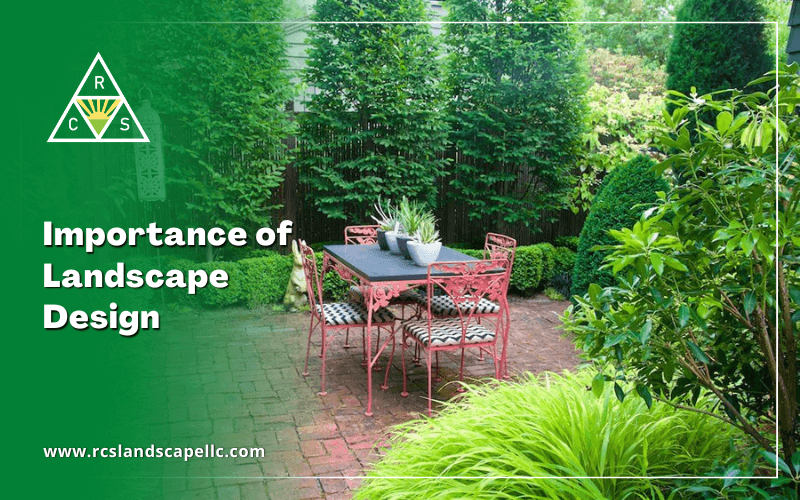The 25-Second Trick For Landscape Design
The Basic Principles Of Landscape Design
Table of ContentsThe Basic Principles Of Landscape Design Some Of Landscape DesignAll About Landscape DesignGetting The Landscape Design To WorkLandscape Design Can Be Fun For Anyone
A yard can typically be split into 3 areas: public (the front lawn), personal (the back yard), and solution (normally the side backyard). The place of activity locations depends mainly on the kind of location, the size of room needed, the type of task, and the preferred closeness to various other activities and structures.The outside wall of your house typically functions as the very first wall surface or beginning point of an exterior area. Inappropriate uses must be separated, and relevant activities, such as cooking and dining, need to be created to make the yard extra effective and pleasurable. When using hardscape to create areas, make use of building product similar to that made use of in the home for connection from the house right into the garden.
Linked areas. Credit Scores: Gail Hansen, UF/IFAS Utilizing comparable hardscape features and repeating plants draws the eye around the garden.
The Main Principles Of Landscape Design

For emotional convenience plants are utilized as physical or implied barriers for personal privacy and safety. Physical barriers block both the view and accessibility to an area and include fencings, wall surfaces and plant hedges. Indicated obstacles, typically reduced growing plants, obstruct access yet not the view (Number 9). Various other features of plants include cleaning up the air, protecting against erosion and dirt loss, retaining dampness in the dirt, and returning raw material to the dirt.
Physical and suggested barriers. Debt: Gail Hansen, UF/IFAS For these reasons, the kinds of plants to be made use of (such as trees, hedges, or groundcovers) need to be chosen in the early stages of planning (Landscape Design). Plant kinds are chosen for their practical capacities to ensure that their future function and required area can be thought about at the very same time

The smart Trick of Landscape Design That Nobody is Talking About
Each plant mass is in front of, behind, or next to, another mass. Credit Report: Gail Hansen, UF/IFAS Repeating plants within a mass and duplicating masses with similar plants connects the yard with each other. The individual plant characteristics see this here should be taken into consideration to efficiently layer and mass plants.
All plant make-ups start with the major structure plants, the big, mostly evergreen background plants-such as the trees and big shrubs. These plants different or enframe spaces, manage the size of the area, and supply the starting point for read the article picking the appropriate attributes of the 2nd layer, midground plants, for massing and infill.
Important points in the yard should be highlighted by the use of distinct plants, distinctive frameworks, or garden accessories. Marking thresholds or entrances to rooms can be done with gates, arbors, and actions, or with using one-of-a-kind and vibrant plants. The form and/or style motif of the garden will certainly commonly assist identify the crucial points and just how they need to be highlighted.
Other important locations in the backyard are focal points, which is made use of to aesthetically arrange a landscaped area. Different point of views or point of views can disclose various make-ups in the landscape that might need a range of focal factors.
Getting The Landscape Design To Work
Number 13. Plant forms. Debt: Gail Hansen, UF/IFAS After form, texture is the next leading function of a plant; rugged, medium and fine textures can be utilized for contrast and focus in the landscape. Type and structure both trump shade in the garden for a lot of the year. Throughout particular periods, shade will be the most recognizable characteristic of the yard.
The enjoyable scent of plants, the noise of wind in the trees, the sound and appearance of water, and the shades and structures of sculptures, pots and yard furniture all include in the experience of the garden. One detail that is commonly neglected is the result of light on the aesthetics of the plants.

The Greatest Guide To Landscape Design
It is crucial to recognize the ultimate fully grown size of plants so they can be put in the right area and spaced properly when they are installed. Offering plants area to grow is a challenge since the usual mature dimension is my explanation normally based on ideal expanding problems and the ecological problems of a site might cause a plant to enlarge or stay smaller.